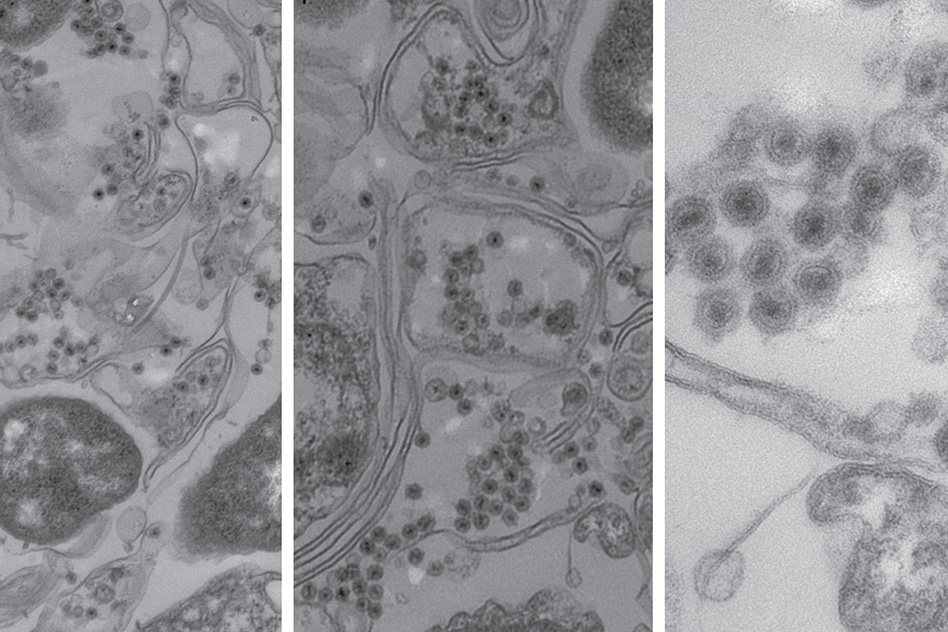New Ocean-Dwelling, Bacteria-Killing Tailless Virus Hid in Plain Sight

For millions and perhaps billions of years, a life-and-death struggle has been waged in oceans around the world on the microscopic level, with virus predators pursuing and consuming bacterial prey.
Viruses — microscopic organisms that can't reproduce without a host — are voracious when it comes to bacteria, and scientists recently described a previously unknown virus family that turns out to be widespread and plentiful in oceans. The family is particularly adept at preying on and infecting marine microbes, helping to maintain a healthy balance in ocean ecosystems. [In Photos: The Wonders of the Deep Sea]
About 10 million viruses (not all of them infect bacteria) are found in every millimeter of sea surface water, and they play a largely unsung role in the marine food chain, study lead author Kathryn Kauffman, a postdoctoral researcher in the Department of Civil and Environmental Engineering at the Massachusetts Institute of Technology (MIT) told Live Science in an email.
In a single day, viruses kill an estimated 20 percent of the ocean's prolific bacteria, "releasing nutrients for survivors and re-routing the flow of materials between players and places on global scales," Kauffman said.
The diversity of viruses is what has kept the new group hidden in plain sight for so long, the researchers wrote in the study. They dubbed the family of elusive, "unrecognized killers" Autolykiviridae, after the character Autolycus from Greek mythology. A son of the wily and puckish god Hermes, Autolycus had powers of invisibility and was very good at avoiding capture.
To identify bacterial viruses like Autolykiviridae, scientists typically look at the behavior and overall body shape of known viruses, most of which have distinctive "tails," according to the study. But Autolykiviridae have no tails, which might explain why they have been overlooked in previous studies of ocean viruses, Kauffman told Live Science.
"One aspect of our study that helped us detect them was the longer time we waited when we first tried to grow them from seawater samples," she explained. "Since many of them grew more slowly than the tailed viruses, this let us catch them where other studies might have missed them."
Sign up for the Live Science daily newsletter now
Get the world’s most fascinating discoveries delivered straight to your inbox.
The researchers found that Autolykiviridae were also much less choosy about their prey than their bacteria-hunting cousins. While most viruses seek out only one or two species of bacteria, the new group preyed on dozens of different bacteria types and infected many different species, the study authors reported.
And this ocean virus group is very likely thriving elsewhere, too — in fact, a closely related group may even reside within our own digestive systems, study co-author Libusha Kelly, an assistant professor of systems and computational biology, and of microbiology and immunology at the Albert Einstein College of Medicine, said in a statement.
"We've found related viral sequences in the gut microbiome," Kelly said. "But we don't yet know how they influence microbial communities in the gut or how important they are for health."
The findings were published online yesterday (Jan. 24) in the journal Nature.
Original article on Live Science.

Mindy Weisberger is an editor at Scholastic and a former Live Science channel editor and senior writer. She has reported on general science, covering climate change, paleontology, biology and space. Mindy studied film at Columbia University; prior to Live Science she produced, wrote and directed media for the American Museum of Natural History in New York City. Her videos about dinosaurs, astrophysics, biodiversity and evolution appear in museums and science centers worldwide, earning awards such as the CINE Golden Eagle and the Communicator Award of Excellence. Her writing has also appeared in Scientific American, The Washington Post and How It Works Magazine. Her book "Rise of the Zombie Bugs: The Surprising Science of Parasitic Mind Control" will be published in spring 2025 by Johns Hopkins University Press.










